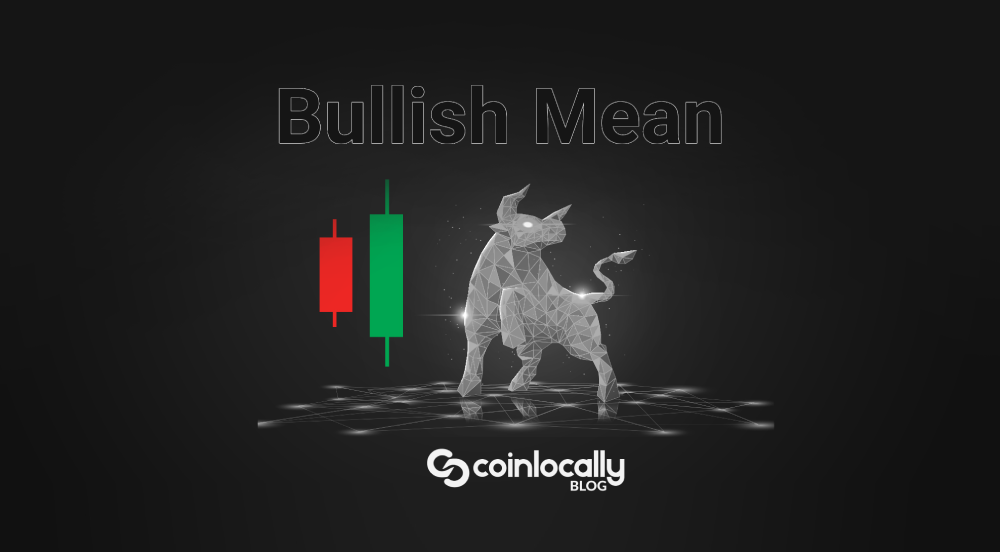When it comes to navigating financial markets, understanding the concept of Bullish vs Bearish sentiment is fundamental. These opposing views are more than just expressions of optimism or pessimism; they drive market trends, shape investor behavior, and influence decision-making across the financial world.
Knowing whether a market is bullish or bearish helps traders align their strategies with the prevailing mood. Understanding this dynamic can give you a sharper edge in trading stocks, crypto, or commodities.
Table of Contents
What Does Bullish Mean?
In the Bullish vs. Bearish comparison, a bullish outlook is characterized by confidence in price increases. A bullish trader or investor expects the price of an asset—be it a stock, index, or cryptocurrency—to rise in the near or long term.
Bullish markets, or bull runs, typically occur during strong economic growth, low unemployment, increasing consumer confidence, and rising corporate earnings. Investor sentiment is optimistic, and buying activity dominates the market. In such times, investors may feel encouraged to take on more risk in hopes of higher returns.
Bullish sentiment can apply to individual assets or entire sectors. For example, an investor may be bullish on tech stocks due to innovation trends or on gold due to inflation fears. In all cases, the expectation is the same — upward price momentum.

What Does Bearish Mean?
On the opposite side of Bullish vs Bearish, a bearish outlook reflects a belief that prices will fall. A bearish investor expects negative returns and often positions their portfolio to minimize risk or profit from declines.
Bear markets — sustained periods of falling prices — usually emerge during economic recessions, geopolitical instability, rising interest rates, or declining corporate earnings. Investor confidence tends to drop, and market sentiment shifts toward caution or fear.
In bearish environments, traders may exit positions, move into safe-haven assets, or use instruments like short selling or put options to hedge against losses. Bearish sentiment is marked by pessimism, defensive behavior, and often lower trading volumes.

The Origins of Bullish vs Bearish
The terms “bullish” and “bearish” have roots in how these animals attack. A bull thrusts its horns upward, symbolizing rising prices. A bear swipes its paws downward, representing falling prices. These metaphors have become deeply ingrained in financial language and are now universal market direction indicators.
Recognizing Bullish vs Bearish Markets
A bullish market is typically identified by:
- Sustained upward trends in asset prices
- High investor confidence and increasing demand
- Rising trading volumes and broad market participation
- Economic indicators point to growth
A bearish market, on the other hand, is identified by:
- Prolonged downward price movements (typically a 20% drop from recent highs)
- Negative news cycles, economic contraction, or rising unemployment
- Reduced investment activity and lower trading volumes
- Investor anxiety and risk aversion
These characteristics can exist in large market cycles and shorter-term trends, such as weekly or monthly movements.
Bullish vs Bearish Psychology
Market sentiment plays a decisive role in price action. In a bullish phase, greed and enthusiasm often push prices higher, sometimes beyond fair value. In bearish conditions, fear dominates, and panic selling can drive prices well below intrinsic worth.
Understanding these emotional drivers is critical for both short-term trading and long-term investing. Traders anticipating sentiment shifts, such as a bullish rally turning bearish after a major economic report, can gain an advantage over those focusing only on charts or news headlines.
Bullish vs Bearish: Strategies
Bullish Markets
In a bullish market environment, traders and investors tend to see opportunities. Popular strategies include:
- Buy and hold: Holding long positions in promising stocks or crypto with expectations of continued growth.
- Momentum trading: Capitalizing on assets showing strong upward trends.
- Breakout trading: Buying when an asset breaks above resistance, anticipating further gains.
- Growth investing: Focusing on sectors like technology or consumer discretionary that perform well in expansion phases.
Bullish strategies are generally aggressive, seeking to maximize upside while prices are rising prices for Bearish Markets
The focus typically shifts to preservation and risk management in bearish market conditions. Common approaches include:
- Short selling: Selling assets to repurchase them at a lower price.
- Inverse ETFs: Using funds designed to move opposite to market indexes.
- Hedging with options: Using puts or protective collars to limit downside.
- Defensive investing: Allocating capital to safer sectors like healthcare, utilities, or consumer staples.
Bearish strategies emphasize caution, capital protection, and sometimes profiting from the decline in asset values.
Mixed Market Signals
Sometimes, markets do not neatly fall into bullish or bearish categories. Prices move sideways or fluctuate in a range, offering unclear signals. These periods of consolidation can confuse investors and lead to choppy trading behavior.
In these situations, traders rely heavily on technical indicators like moving averages, RSI, or MACD to determine short-term direction. There is also a commonly mixed sentiment, with some sectors being bullish while others remain bearish.
Real-World Examples of Bullish vs Bearish Shifts
Shifting from a bullish to bearish trend may occur after unexpected news, such as an earnings miss, an inflation report, or a central bank announcement. Similarly, a bearish trend may reverse if a significant policy shift boosts investor confidence.
For example, a stock that has been rising steadily for months may suddenly turn bearish following a poor quarterly report. Conversely, a struggling market may turn bullish after interest rate cuts or strong economic data.
These shifts underline the importance of staying alert and adjusting strategies based on changing sentiment.
Why Understanding Bullish vs Bearish Matters
Understanding Bullish vs Bearish sentiment is more than just financial jargon. It helps traders:
- Time entries and exits are more effectively
- Choose the right strategies for market conditions
- Manage risk and avoid emotional decisions
- Build awareness of market cycles and long-term trends
Being able to read the mood of the market and respond appropriately can mean the difference between consistent success and repeated mistakes.
Conclusion
The battle between bulls and bears defines the rhythm of every financial market. Knowing the difference between Bullish vs Bearish trends empowers traders and investors to make smarter, more strategic decisions. Whether markets are surging on optimism or sinking under fear, those who understand how sentiment drives price movement are better equipped to succeed.
Mastering the concept of Bullish vs Bearish is not just about theory — it’s about practical application in real-time market scenarios. By recognizing the signs of each and adapting your approach accordingly, you can ride the waves of market sentiment instead of getting swept away by them.




